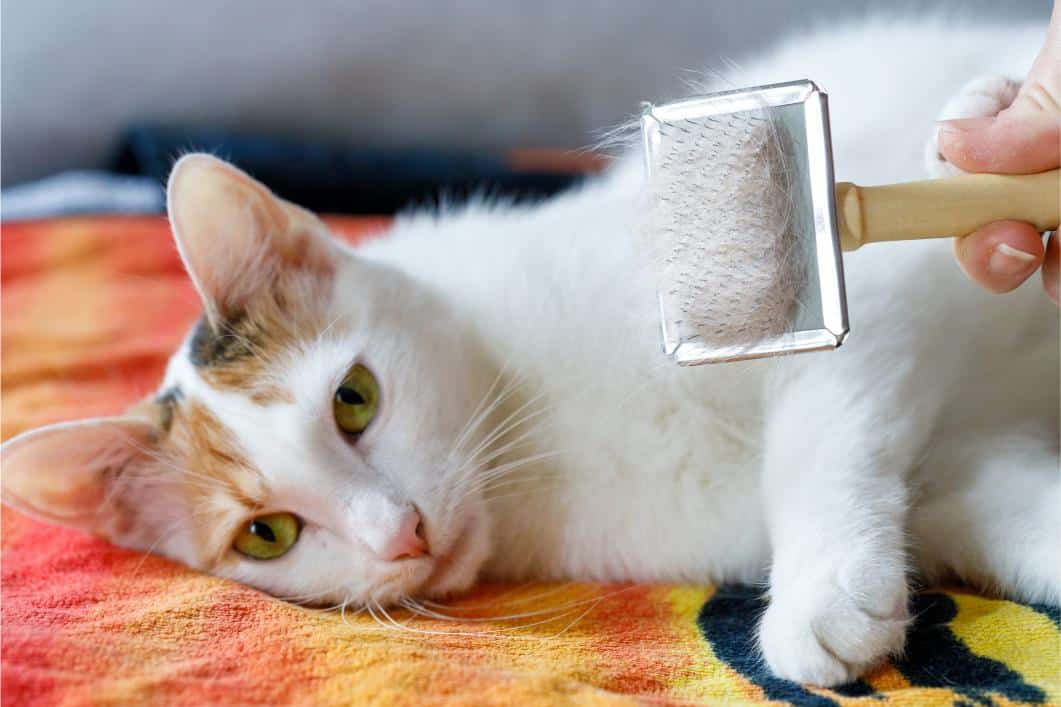Hairball Management for Cats

Perhaps nothing sends cat parents sprinting toward the paper towels faster than the familiar sound of their feline working hard to deposit a hairball on the floor. But what might seem like a minor inconvenience for us can become a serious health issue for our cats.
At Englishtown Vet MD, we love helping our feline friends feel their best. While an occasional hairball just comes with the territory, chronic hairballs warrant a discussion with your veterinarian. In this blog, our team shares some of our top tips for preventing hairballs, and knowing when hairball problems require a call to the veterinarian.
What Causes Hairballs?
Cats are fastidious creatures who thoroughly enjoy a good licking. But all of this hygiene can come at a cost when cats swallow loose fur as they’re grooming. If enough fur builds up in the kitty’s digestive tract, it forms a nasty clump. And it’s this clump that our cat friends will try to purge.
When a cat’s digestive system is healthy and functioning properly, it can handle the typical amount of fur that gets ingested during grooming. However, certain factors can cause cats to take in more fur than usual, including:
- Long-haired breeds
- Skin conditions that cause excess shedding (and therefore excessive grooming)
- Overgrooming due to boredom or stress
When Hairballs Become Hazardous
Most of the time, the fur that cats gradually ingest while grooming either passes through the cat’s digestive tract, or it forms a clump that gets regurgitated on your new rug. In rare cases, however, the clump of matted fur can get too large, and it will become lodged somewhere in the cat’s digestive system. If it manages to pass into the small intestine, it can create a blockage—a serious medical emergency that requires immediate surgical intervention.
Contact your veterinarian if your cat is retching several times a day (whether or not anything comes up) or if your cat’s vomiting or retching is accompanied by other symptoms such as lethargy, loss of appetite, constipation, or diarrhea. Digestive problems other than a hairball could be to blame, and a proper diagnosis is needed.
Home Care for Hairballs
Cats with frequent hairballs should be examined by a veterinarian. Underlying digestive problems could be causing hairballs to form faster than usual, and without treatment, the cat’s health will not improve.
For cats that deposit the occasional hairball and then go back to business as usual, the following strategies can be helpful:
- Frequent brushing can significantly reduce the amount of hair your cat ingests. This is particularly helpful for long-haired breeds.
- Hairball control gels like Laxatone
- Hairball control cat food or treats
- Chewable high-fiber hairball control supplements
Keeping Your Cats Looking and Feeling Their Best
Cats love grooming their crowning glory. But if hairballs are disrupting your cat’s quality of life (and wreaking havoc on your rugs), please contact our team at (732) 786-8877 to schedule an appointment.
